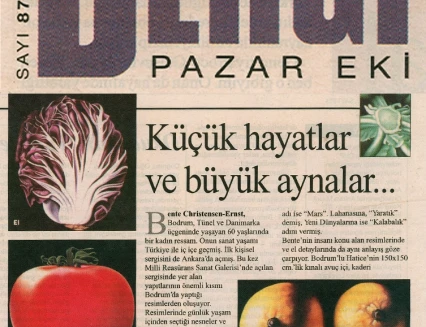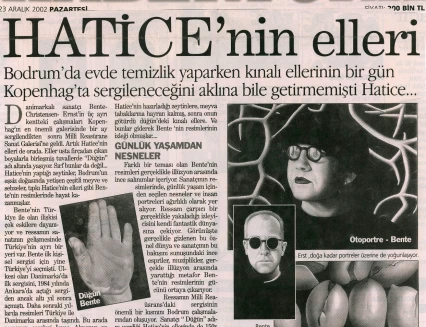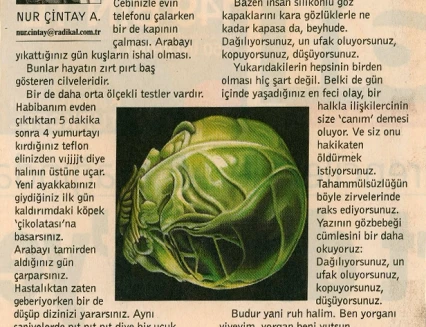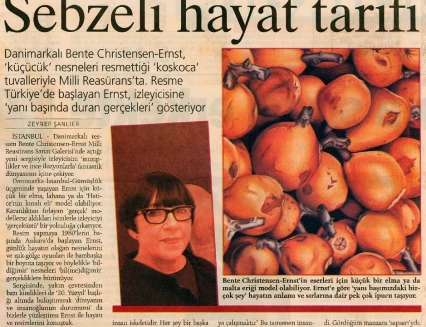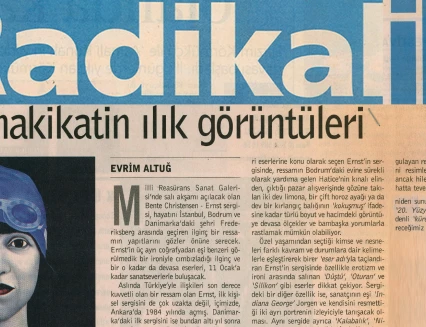Bente Christensen-Ernst Exhibition at Millî Reasürans Art Gallery:
Subtle Oscillations Between Reality and Illusion
December 10, 2002-January 11, 2003
Millî Reasürans Art Gallery is hosting a painting exhibition by Danish artist Bente Christensen-Ernst. Bente lives in Istanbul (Tünel), Bodrum (Gümüşlük) and Frederiksberg (Denmark). She works in all three cities. The impressions she receives from three different worlds are integrated in Bente's artistic world and on her canvas.
Bente's relations with Turkey go back a long way and Turkey has an important place in the development of her art. She opened her first solo exhibition in Ankara in 1984. Her first exhibition in Denmark was held in Copenhagen in 1990. She worked in Denmark between 1990-1996, organized exhibitions and received positive criticism from art circles. Two of his works were selected for The National Gallery on Frederiksborg Castle and the Danish Art Fund museums. He became a member of the Danish Artists' Association. In later years, his paintings were transported between Turkey and Denmark. He participated in group exhibitions in Sweden, Germany and France.
A significant portion of the paintings in Bente's exhibition at the Millî Reasürans Art Gallery consist of his Bodrum works. Some of these paintings were exhibited in Denmark.
Objects selected from daily life and human portraits hold an important place in Bente's paintings. In this respect, he gives the impression of a realistic, even overly realistic artist. However, on Bente's canvas, familiar real objects are taken to another dimension with their dimensions, frames, light and shadow effects and turn into an illusion or a fictionalization. Bente draws the viewer, whom he captures with a striking reality, into his own fantastic world. This subjective world hidden by apparent reality and the subtle jokes, mischief in the artist's presentation of this view, the metaphor he creates between reality and illusion, reveal the mysterious appeal of Bente's paintings. The objectivity on her canvas, in a way, turns into a symbolic image that makes the viewer question reality or what that reality hides. This orientation also forms the basis of Bente’s understanding of art, which she calls “alternative realism”. It must be admitted that Turkey offers very rich and colorful imagery to Bente’s world of painting.
Bente paints her paintings on large-sized canvases. She works on the object or human portrait she chooses on this canvas in a very simple manner. She does not include other objects. She prefers black as a background, which highlights and frames the object she chooses more clearly. With a special painting technique, she can use the light and shadow effects as she wishes.
